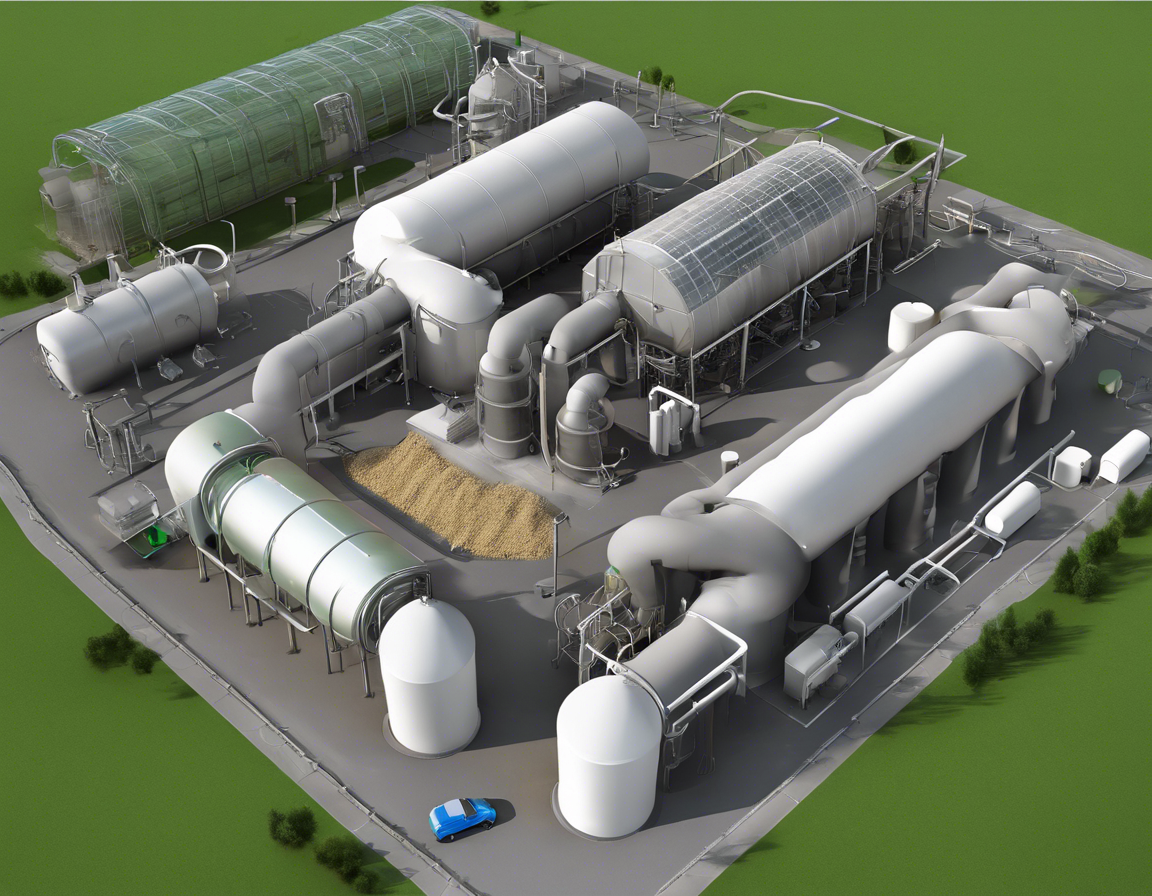Biogas is a renewable energy source that is derived from the decomposition of organic matter such as agricultural waste, food scraps, and sewage. It is a sustainable alternative to traditional fossil fuels, as it helps reduce greenhouse gas emissions and provides a way to manage organic waste. In this article, we will delve into the various components of biogas and how they contribute to its production and utilization.
What is Biogas?
Biogas is a type of renewable energy that is produced through the anaerobic digestion of organic materials by bacteria. The main components of biogas include methane (CH4) and carbon dioxide (CO2), with small amounts of other gases such as hydrogen sulfide (H2S), nitrogen (N2), and traces of water vapor.
Components of Biogas
- Methane (CH4):
-
Methane is the primary component of biogas, typically accounting for 50-75% of its composition. It is a potent greenhouse gas with a high energy content, making it a valuable source of renewable energy.
-
Carbon Dioxide (CO2):
-
Carbon dioxide makes up the remaining portion of biogas, usually around 25-50%. While CO2 is also a greenhouse gas, biogas production from organic waste is considered carbon-neutral as it recycles carbon that is already in the natural carbon cycle.
-
Hydrogen Sulfide (H2S):
-
Hydrogen sulfide is a minor component of biogas that can be corrosive and toxic. Its presence needs to be minimized through desulfurization processes to prevent equipment damage and ensure safe operation.
-
Nitrogen (N2):
-
Nitrogen is present in biogas in small amounts, typically less than 1%. While it is an inert gas, high levels of nitrogen can dilute the energy content of biogas.
-
Water Vapor:
- Traces of water vapor may be found in biogas, especially in humid climates. Excessive moisture can impact the combustion properties of biogas and may require removal through dehydration processes.
Production Process of Biogas
1. Feedstock Preparation:
- Organic Waste Collection: Agricultural residues, manure, food waste, and wastewater sludge are collected as feedstock for biogas production.
- Size Reduction: Feedstock is processed to increase its surface area for better digestion by bacteria.
2. Anaerobic Digestion:
- Digester Types: Biogas can be produced using batch digesters, continuous stirred-tank reactors, or plug-flow digesters.
- Bacterial Fermentation: Bacteria break down organic matter in the absence of oxygen, producing biogas as a byproduct.
3. Gas Storage and Utilization:
- Gas Storage: Biogas is stored in gas holders or tanks to be used as fuel for combustion engines, heating systems, or for electricity generation.
- Utilization: Biogas can be used directly for cooking, heating, or electricity production, or further processed into biomethane for vehicle fuel.
Benefits of Biogas Production
- Renewable Energy: Biogas offers a sustainable alternative to fossil fuels, reducing reliance on non-renewable resources.
- Waste Management: Organic waste that would otherwise emit greenhouse gases in landfills is diverted for biogas production, mitigating environmental impact.
- Energy Independence: Biogas production can provide decentralized energy solutions, promoting energy self-sufficiency.
- Carbon Neutrality: Biogas production is considered carbon-neutral, as the carbon released during combustion is offset by the carbon sequestered in feedstock.
Frequently Asked Questions (FAQs)
1. What is the difference between biogas and natural gas?
Biogas is produced from organic waste through anaerobic digestion, while natural gas is a fossil fuel extracted from underground reservoirs. Biogas is considered renewable and carbon-neutral, whereas natural gas is a non-renewable resource with a significant carbon footprint.
2. Can biogas production be scaled for large-scale energy generation?
Yes, biogas production can be scaled up for large-scale energy generation by optimizing feedstock supply, increasing digester capacity, and implementing efficient gas utilization technologies.
3. What are the challenges associated with biogas production?
Challenges in biogas production include fluctuating feedstock availability, technical issues in digester operation, gas impurities, and market barriers for biogas utilization.
4. Is biogas a cost-effective energy solution?
Biogas can be cost-effective, especially when considering the savings on waste management and potential revenue from electricity or heat generation. The economics of biogas production depend on factors such as feedstock costs, operational efficiency, and government incentives.
5. How can biogas be used for transportation?
Biogas can be upgraded to biomethane through processes such as purification and compression, making it suitable for use as a vehicle fuel. Biomethane can be injected into natural gas pipelines or used to power natural gas vehicles.
6. What are the environmental benefits of biogas production?
Biogas production helps reduce methane emissions from organic waste decomposition, mitigating greenhouse gas emissions. It also contributes to sustainable waste management practices and promotes circular economy principles.
7. What role does policy play in promoting biogas production?
Government policies and incentives play a crucial role in promoting biogas production by providing financial support, setting renewable energy targets, establishing feed-in tariffs, and implementing regulations to encourage sustainable waste management practices.
8. Can biogas production be integrated with other renewable energy sources?
Yes, biogas production can be integrated with other renewable energy sources such as solar and wind power to create hybrid energy systems. This integration can enhance energy reliability, grid stability, and overall sustainability of the energy supply.
9. How does climate change impact biogas production?
Climate change can impact biogas production through changes in feedstock availability, temperature variations affecting digester performance, and evolving energy policies aimed at reducing emissions. Adapting biogas systems to climate change challenges is essential for long-term resilience.
10. What are the future prospects for biogas as a renewable energy source?
The future prospects for biogas are promising, with increasing interest in sustainable energy solutions, circular economy principles, and decarbonization efforts. Technologies for biogas upgrading, grid injection, and sector coupling are advancing, expanding the potential applications of biogas in a greener energy landscape.
In conclusion, biogas production offers a sustainable and versatile energy solution with benefits for the environment, waste management, and energy security. Understanding the components of biogas, its production process, utilization options, and the potential for future developments is key to harnessing the full potential of this renewable energy source.
